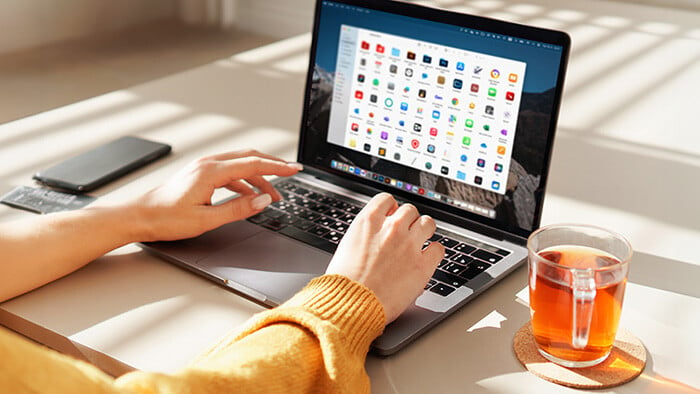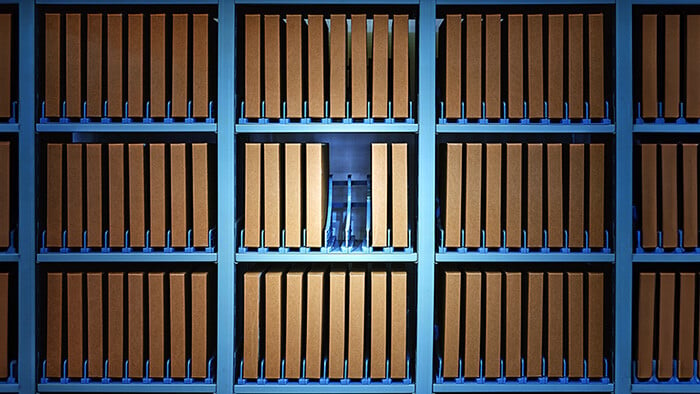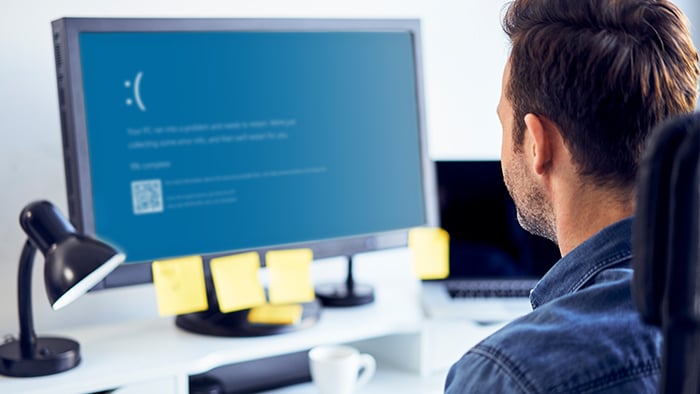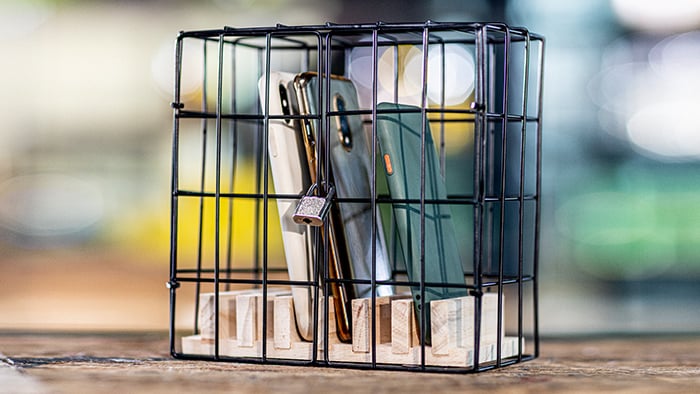- Security
- Privacy
- Performance
How to Lower CPU Usage on Windows
High CPU usage is a problem that can affect any Windows user, but gamers, streamers, and content creators are most susceptible. A CPU running at 100% (or close to it) can cause your PC to freeze or crash. Learn how to lower your CPU usage and why it’s so high, then install Avast Cleanup to get smoother device performance.

Written by
Published on September 30, 2024
Reviewed by
Crissy Joshua
Published on September 30, 2024
Reviewed by
Nica Latto
This Article Contains
This Article Contains
10 ways to reduce CPU usage
To fix your high CPU usage you need to shut down any open apps and browser tabs, ensure your device is free from malware, and check that all your software is updated. If this doesn’t fix it you may need to try more technical solutions such as altering your power settings and disabling extra unnecessary features.
Here are the ten best ways to reduce CPU usage on your PC, beginning with diagnosing the problem:
1. Identify the reason for your high CPU usage
You can diagnose CPU issues using Windows Task Manager, which shows every running program and its CPU use as a percentage of your PC’s total usage. Doing this allows you to easily identify programs consuming excessive processing power so you know which ones to close.
How to check CPU usage on Windows 10 or 11:
-
Press Ctrl + Shift + Esc to open the Task Manager.
-
Click the CPU column to sort the programs by CPU use.

-
Close any programs you don’t need running, especially those taking up the most CPU.
2. Shut down your browser and any other open apps
Closing down apps and browser tabs, whatever their CPU utilization percentage, will help lower your overall CPU usage. This is particularly helpful if you have lots of programs or tabs open, or your CPU is close to 100%.
Some applications may continue to run in the background after you’ve closed them if you simply closed them by “x-ing” out. To ensure the program is completely closed and not running in the background, open Task Manager again and follow these steps:
-
Press Ctrl + Shift + Esc to open the Task Manager.
-
Select the program you wish to stop, and click End Task.

Shutting down programs and apps manually can certainly lower your CPU usage. But what about those unwanted programs you don’t even use anymore or forgot you installed in the first place? Avast Cleanup can help you remove old and forgotten programs and put apps to sleep that you’re not using, which can help fix high CPU usage and free up your computer’s resources for the important apps you need now.
3. Disable startup programs
Disabling startup programs in Windows can enhance boot speed and reduce the strain on your CPU by stopping unnecessary applications from launching automatically when your PC starts.
Here’s how to disable startup programs on Windows 10 and 11:
-
Press Ctrl + Shift + Esc to open the Task Manager.
-
Click the Startup apps tab.
-
Right-click a program, then choose Disable.

4. Update your software including drivers
Outdated software and drivers can cause high CPU usage, as they won’t benefit from the latest performance updates and may even become incompatible with your version of Windows.
You can set all apps from the Microsoft Store to update automatically:
-
Type Microsoft Store into the search bar and open it.
-
Click your Profile, choose Settings, and toggle on App updates.
This will only keep apps from the Microsoft Store up to date. You may have many apps you downloaded directly from developers’ websites, too. You can use a software updater tool to keep all your apps updated, automatically.
You should also make sure you’re running the latest version of Windows by going to Windows Settings > Update & Security > Windows Update. Click Check for updates.
When it comes to updating your drivers, it’s easiest to use a tool like Avast Driver Updater, which installs updates automatically for your most important computer drivers, from your printer, keyboard, and router, to your audio and graphics drivers.
5. Alter your power settings
Your Windows power settings are normally optimized to strike a balance between performance and battery life. However, you can put a cap on CPU usage.
This may stop your device freezing or overheating, but it won’t deal with the underlying problem affecting your CPU. You may also notice that certain apps don’t function to their full potential as they will be blocked from accessing the power they need, which means that this is more of a stop-gap solution rather than a cure for your PC’s issues.
Here’s how to cap CPU usage on a Windows PC:
-
Type Edit power plan into the search bar and open it.
-
Select Change advanced power settings.
-
Scroll and expand Processor power management, then Maximum processor state.
-
Click the percentage for On battery and Plugged in and change both to 90% (or less, if desired).

Be aware that the lower the percentage cap you place on your CPU, the more likely your programs won’t work as well as you’re used to.
6. Disable extra features
There are a variety of Windows features that can contribute to high CPU usage, many of which aren’t necessary for your PC to perform its core functions and some you may not even be aware of.
Disable P2P sharing
P2P (peer-to-peer) sharing is a feature that can lean heavily on your CPU without you ever needing to use it, especially if you’re the only PC on your network. If there are other PCs on the network, P2P sharing can improve download times and ease the load on your computer’s CPU.
Here’s how to disable P2P sharing on Windows:
-
In the search bar, enter Update settings, then open Windows Update settings and go to Advanced options.
-
Select Delivery Optimization, then toggle off Allow downloads from other PCs.

Disable notifications
Though notifications can prove useful when it comes to getting up-to-date information from your Windows device, they aren’t entirely necessary and can eat into your CPU usage.
To disable notifications:
-
Type Notifications and actions into the search box on your taskbar and open it.
-
Toggle Notifications off.

You may also want to consider changing the settings for individual applications, such as turning off Chrome notifications, although the impact on your CPU utilization may be limited.
7. Remove viruses and other malware
Scanning for malware will allow you to identify and remove viruses and other software damaging your PC and causing your CPU to run higher than normal. One of the easiest ways to do this is by downloading a free antivirus from a trustworthy cybersecurity provider like Avast, which blocks billions of malware attacks every year.
Avast One helps protect your device against malware that can eat up your CPU usage. It can also help keep your network more secure with its built-in firewall and VPN.
8. Restart the WMI Provider Host
The WMI Provider Host is a key component for system management and monitoring. Over time, it can cause high CPU utilization, so resetting it can help bring usage back down.
To reset the WMI Provider Host:
-
Search for Services in the Windows Start search bar and open it.
-
Scroll down and right-click Windows Management Instruction, then select Restart.
9. Physically clean your Windows device
If you haven’t physically cleaned your computer in a long time, it's possible that dust has built up in your system. This can cause several problems, but one of the biggest is disrupting the cooling fans.
If the cooling fans are not functioning properly, your PC is more prone to overheating, which can lead to your CPU hitting 100% usage faster.
 Dusty PC fans can lead to high CPU utilization.
Dusty PC fans can lead to high CPU utilization.
The remedy for this is easy: Physically clean your device!
10. Perform a reset
If all else fails, you may wish to reset your PC completely. This can help with CPU usage, and improve battery life and your browsing experience. Performing a reset doesn’t necessarily mean losing your personal files, as Windows provides an option to keep these.
Here’s how to perform a reset:
-
Go to Settings > System > Recovery.
-
Under Recovery options select Reset PC.

-
Select Keep my files to keep your personal files but remove apps and settings. If you want to perform a full factory reset, select Remove everything.
What is a CPU, exactly?
CPU stands for central processing unit. It acts as your computer's brain, controlling and regulating everything from processing to running apps. Without it, your PC wouldn’t be able to function. It’s important not to confuse the CPU with the GPU, which handles graphics tasks.
Normal CPU usage levels are typically between 10% and 30% when running simple tasks like word processing in Microsoft Word. More complex activities such as 3D modeling or video editing can push your CPU up to 100% for short periods — as long as your CPU returns to normal levels when finished with an intensive task, your PC should be fine.
Stress testing your CPU can give you a clearer idea of how much load your device can handle.
Why is my CPU usage so high?
High CPU usage can be caused by too many tabs open, outdated software, overheating, hardware problems, and malware, among other things.
Here are some of the most common reasons for high CPU usage:
Intense app and browser usage
Having too many apps or browser tabs open simultaneously can strain your PC’s workload and stretch its resources; and your machine will have to crank up the CPU power to compensate.
Sometimes, it's not the number of applications but the intensity of one particularly demanding app. For example, a graphically intense game may push your CPU to its limits, which is why some gamers build their own PC.
Your software is outdated
Outdated software, including drivers, can contribute to high CPU use. This is because as Windows is updated over time, other software can become incompatible or glitchy. This causes your CPU to work harder to compensate.
Updating your drivers, the operating system, and other software is usually easy, and doing so can have other benefits like speeding up your computer.
Your PC is overheating
An overheating PC can lead to high CPU usage. Overheating can be caused by many factors including demanding applications, fan failure, or the device being left in direct sunlight.
However, one of the most common reasons is your PC cooling fans failing. If your cooling fans are unusually loud, it may be a sign that they aren’t efficiently regulating the temperature of your CPU. Check your CPU’s temperature to see if the fan’s the possible culprit, then clean it.
Hardware issues leaving your PC overworked
A computer is an interconnected system, meaning that if one component starts having problems it can affect other hardware. For example, issues with RAM, or the SSD (solid state drive) or HDD (hard disk drive) (hard disk drive) can overwork your CPU resulting in abnormally high usage.
Similarly, if a component in your PC ends up physically damaged, it can also lead to high CPU usage.
Malware and viruses
Malware and viruses can damage your device from the inside, leading to issues with your SSD or HDD, limiting their efficiency and forcing the system to work harder. This can have a knock-on effect resulting in unusually high CPU usage.
Improve your CPU usage with Avast Cleanup
Managing CPU usage can be a tedious task, especially for older machines — as soon as you manage to lower CPU usage with one solution it might increase again because of another issue.
Thankfully, Avast Cleanup can help make this process simpler. By taking care of bloatware and forgotten programs, putting apps to sleep, and freeing up your device’s memory, Avast Cleanup can help to improve performance and minimize the need for constant troubleshooting.
Supercharge Your Phone Automatically
Install free Avast Cleanup to clean up and optimize your phone. Get more space and faster performance.
Supercharge Your Computer Automatically
Try Avast Cleanup for free to clean up and optimize your hard drive. Get more space and faster performance.
Supercharge Your Mac Automatically
Try Avast Cleanup for free to clean up and optimize your hard drive. Get more space and faster Mac performance.
Supercharge Your iPhone Automatically
Install free Avast Cleanup for iOS to help optimize your iPhone, clean up clutter, and get more space.
This Article Contains:
More Performance Articles

How to Clear the Instagram Cache on Your Device

The Applications Folder on Mac: How to Find and Access Your Apps

How to Clear System Data or “Other” Storage from Your iPhone

How to Fix Corrupted Files on Windows Using SFC And DISM

How to Lower CPU Usage on Windows

How to Fix the Blue Screen of Death (BSOD) on Windows 10 and 11

How to Clean Your Computer Screen Without Damaging It

How to Clear Cache in Chrome and Other Browsers

How to Screen Record on Your Mac or Macbook (With or Without Audio)

How to Delete Cache and Cookies on Your iPhone

How to Clear the Cache on Your Mac

Android Safe Mode: How to Turn On & Disable Safe Mode on Your Phone
Supercharge your Android phone with Avast Cleanup
Avast Cleanup
Free installSupercharge your iPhone with Avast Cleanup
Avast Cleanup
Free installCleaning
Performance
Crissy Joshua
30-09-2024